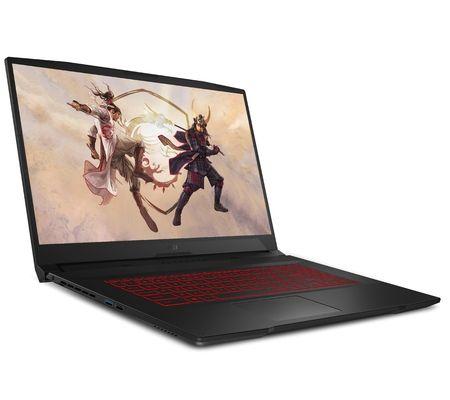Lab – The performance of the GeForce RTX 3050 of the MSI Katana GF66 laptop
By Guillaume HenriShare:
3
3Announced a month ago, the Nvidia GeForce RTX 3050 mobile graphics card is making an appearance in the lab. Embedded in the MSI Katana GF66 equipped with an Intel Core i7 processor, we subjected it to a few games with raytracing.
It's now been just over a month since Nvidia announced the GeForce RTX 3050 laptop GPU and its Ti version. These two graphics cards allow Nvidia to extend the models benefiting from its ecosystem with Nvidia Broadcast, Reflex, raytracing management and, above all, DLSS technology.
The latter is particularly interesting, because it allows (on paper) to increase the number of images displayed per second without degrading the quality. This feature is all the more interesting for the less powerful GPUs since it theoretically allows you to obtain around 20% more performance.
60 fps in Full HD under conditions
To analyze the GeForce RTX 3050, we got our hands on an MSI Katana GF66 with an Intel Core i7-11800H processor, whose performance will make full use of the GPU.

In the Nvidia panel, we learn that the GeForce RTX 3050 of the Katana GF66 does not have DynamicBoost 2.0 and that its TGP is 60 W.
On the panel of games used to calculate our graphics performance index, the GeForce RTX 3050 does well. It is logically placed between the GTX 1650 Ti and the GeForce RTX 3060 with a TGP of 85 W. The performances announced by Nvidia are real, knowing that we are dealing with the “non-Ti” version of the RTX 3050 on which Nvidia has mainly based its presentation.
The 60 fps mark is not reached with games like Assassin's Creed Odyssey, The Witcher 3 or Monster Hunter World. The GeForce RTX 3050 is a little more comfortable with Far Cry 5 and WRC 8, while Diablo 3 is fortunately only a formality. Overwatch in low quality obtains 269 fps.
To complicate things a bit, we also tested a few games with raytracing and the DLSS option for performance and gains with these options.
With only rasterized rendering, the GeForce RTX 3050 is far from ridiculous: The Medium and Control are perfectly playable with just over 40 fps in Full HD, while Cyberpunk 2077 reaches the limit of playability at 33 fps.
Enable raytracing takes a heavy drop in performance and renders Cyberpunk 2077 completely unplayable. Enabling DLSS improves frame rate, but it's far from enough for smooth gameplay. However, by doing without raytracing and enabling DLSS, Cyberpunk 2077 becomes a little smoother, while the option works wonders in Control with a 62% framerate increase.
Finally, if 60 fps is a real milestone for you and you cannot imagine reducing the graphic effects, you will have to turn to the GeForce RTX 3050 Ti which, on paper, is announces 20% more performance than the normal version, even if it means compromising on the processor – from an Intel Core i7 to a Core i5, for example.
Guillaume HenriPassionate about new technologies, especially PCs and their components. This worshiper of test procedures tracks noise and heat using his sound level meter and infrared camera.
How do I make my laptop faster and add storage to it?


![PAU - [ Altern@tives-P@loises ] PAU - [ Altern@tives-P@loises ]](http://website-google-hk.oss-cn-hongkong.aliyuncs.com/drawing/179/2022-3-2/21584.jpeg)

![Good deal: 15% bonus credit on App Store cards of €25 and more [completed] 🆕 | iGeneration Good deal: 15% bonus credit on App Store cards of €25 and more [completed] 🆕 | iGeneration](http://website-google-hk.oss-cn-hongkong.aliyuncs.com/drawing/179/2022-3-2/21870.jpeg)





Related Articles